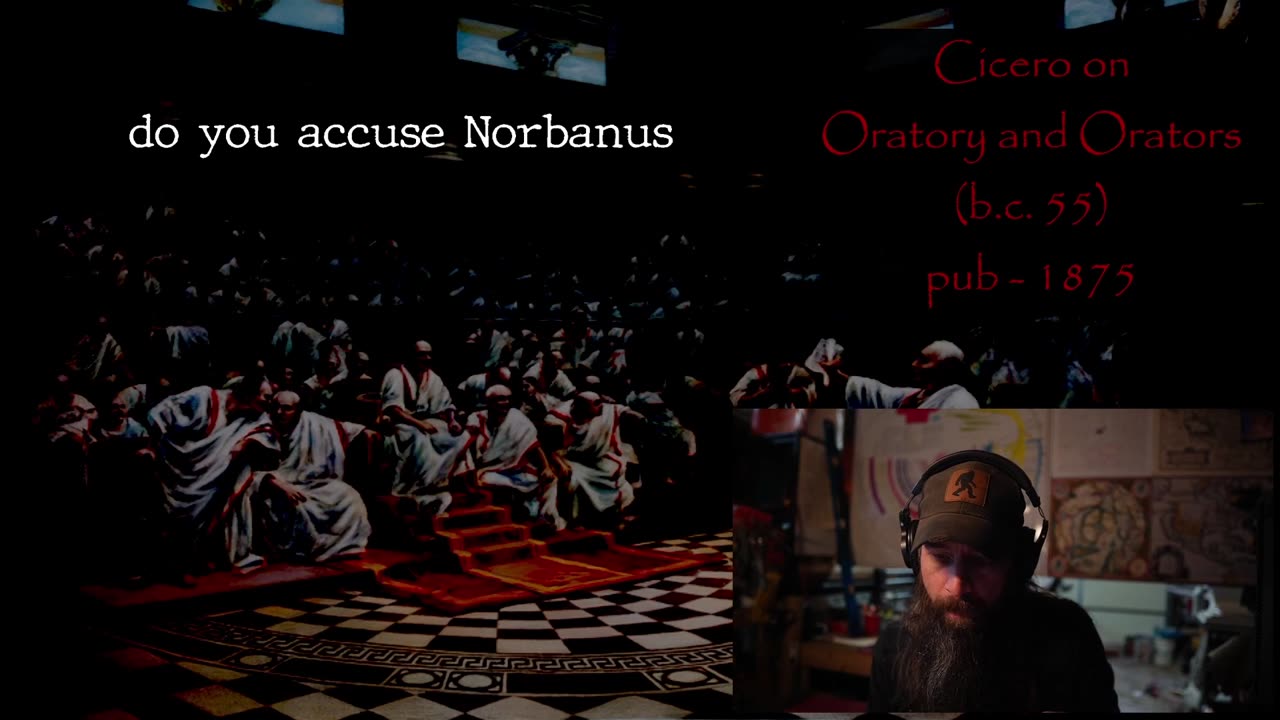Premium Only Content

Cicero on Oratory - B2 - XXXIX XL
Cicero on Oratory - B2 - XXXIX XL
The video presents Cicero's views on oratory techniques, emphasizing the importance of a well-rounded education in effective speaking. It explores how to derive arguments from the essence of a subject, touch on related commonplaces, and utilize comparisons effectively. Cicero distinguishes between intrinsic arguments based on the subject's nature and extrinsic proofs, and includes methods for establishing guilt or virtue in rhetorical arguments.
Key Points:
Education in Oratory
Cicero suggests that for those illiterate in speaking, consistent practice and instruction can help instill basic skills. However, for individuals with a liberal education, he advocates seeking comprehensive knowledge, diving deeper into various forms of arguments.
Intrinsic vs Extrinsic Arguments
Cicero elaborates on two categories of arguments crucial to effective speaking: intrinsic arguments derived from the subject's nature and extrinsic arguments which incorporate external circumstances. This distinction is essential for constructing logical discourse.
Use of Definitions in Argumentation
He emphasizes that definitions are fundamental in clarifying the subject matter, enabling speakers to clearly outline the essence of their arguments whether discussing a whole or a part.
Commonplaces as Sources for Arguments
Cicero identifies 'commonplaces' as a significant source of material used in arguments, encouraging speakers to draw from general views, specific instances, and analogies corresponding to their subjects.
Analogical Reasoning in Oratory
He discusses the power of analogies, indicating that drawing parallel cases can strengthen arguments. Cicero illustrates this with examples of military commanders' duty and personal loss, reinforcing how shared experiences can bolster rhetorical effectiveness.
-
 LIVE
LIVE
OVERKLOC
2 hours ago🔴LIVE - CHILL SUNDAY GAMING - WHO KNOWS WHAT WE'LL PLAY
12 watching -
 LIVE
LIVE
FrizzleMcDizzle
3 hours agoNightReign - Lies of P: Overture after - Come hang out
25 watching -
 1:18:54
1:18:54
Jeff Ahern
4 hours ago $10.27 earnedThe Sunday Show with Jeff Ahern
51.2K6 -
 32:05
32:05
Tactical Advisor
4 hours agoNew Thermal Target for the Military | Vault Room Live Stream 038
39.9K2 -
 2:00:33
2:00:33
GamerGril
3 hours agoThe Evil Within 2 💕 Pulse Check 💕 Still Here
11.8K1 -
 LIVE
LIVE
ttvglamourx
7 hours ago $1.45 earnedPLAYING WITH VIEWERS !DISCORD
104 watching -
 5:59:31
5:59:31
TheManaLord Plays
9 hours agoMANA SUMMIT - DAY 2 ($10,200+) | BANNED PLAYER SMASH MELEE INVITATIONAL
27.1K1 -
 LIVE
LIVE
Jorba4
4 hours ago🔴Live-Jorba4- The Finals
53 watching -
 LIVE
LIVE
BBQPenguin_
4 hours agoSOLO Extraction. Looting & PVP
22 watching -
 1:57:14
1:57:14
vivafrei
21 hours agoEp. 280: RFK Jr. Senate Hearing! Activist Fed Judges! Epstein Victims DEBACLE! & MORE! Viva & Barnes
83.2K90